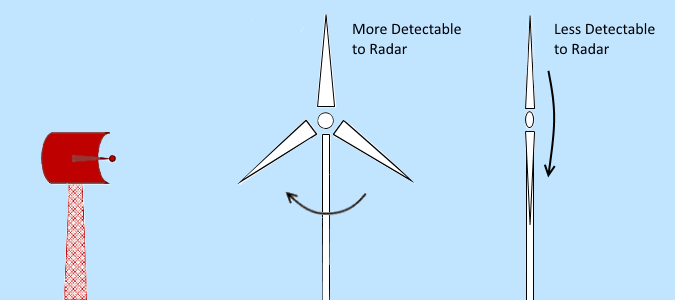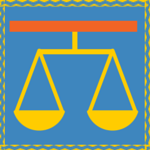Cyrrus has developed its Smartener™ system for eliminating the effects of wind turbines on radar. The system compares data from existing radar and known wind turbine positions to determine whether radar returns originate from aircraft or wind turbines. Aircraft returns are displayed whereas wind turbine returns are not.
How does it work?
The effects of wind turbines on radar vary with wind direction. This is because blades are more detectable to radar when the blades are travelling towards or away from a radar and less when they travel across the radar’s view. Therefore if a wind farm is detected by many radar, some are more likely to detect the turbines than others. Returns that appear on fewer radar are more likely to be from wind turbines whereas returns from more radar are more likely to be aircraft.

Returns that appear near known wind turbine locations are also more likely to be wind turbine returns. Returns that are detected by Secondary Surveillance Radar (SSR) are certain to be associated with an aircraft.
Smartener™ has in-built logic that uses this knowledge to determine whether radar returns originate from wind turbines or aircraft.
Application
 The technology can be useful at airports that have digital Primary Surveillance Radar (PSR) systems.
The technology can be useful at airports that have digital Primary Surveillance Radar (PSR) systems.
It is necessary for there to be a number of existing digital air traffic control radar surrounding the wind farm.
The system has not yet been used to mitigate any wind farm effects. It is understood that the system is being considered for mitigating the effects of a Scottish wind farm which would be detected by the radar at both Glasgow and Edinburgh airports.
Implementation
Smartener™ is provided in a standard 19 inch rack mounting format so it can fit into existing equipment relatively easily. Like many systems, the most difficult thing to achieve is developing a safety case and implementing the mitigation in practice. Sourcing radar data and obtaining permission for its use is likely to be the most complex issue.
The system has been specifically developed for the following conditions:
- The air traffic control service relies on a single digital radar system
- There are one or more existing digital radar available to provide additional radar data
- The wind farm is surrounded by these radar
- The wind turbines are visible to these radar
There is no publicly available trial data to show how well the system works in practice.
Siting Rules
The system is suited to large onshore wind farms which affect a number of airports having modern radar.
Proposed onshore wind farms in the central belt of Scotland could benefit.
Cost
 Typically the bulk of the cost of a new mitigation system at a specific airport is born by the first wind developer to benefit from it. Subsequent wind farm developers then pay for their additional mitigation costs and contribute towards the original mitigation costs.
Typically the bulk of the cost of a new mitigation system at a specific airport is born by the first wind developer to benefit from it. Subsequent wind farm developers then pay for their additional mitigation costs and contribute towards the original mitigation costs.
There could be significant costs associated with the acquisition, connection and licensing of radar data from alternate sources.
Comparison to Other Mitigation Technologies
 A patent application has been filed for this mitigation solution. It includes elements that are similar to three other mitigation technologies which are:
A patent application has been filed for this mitigation solution. It includes elements that are similar to three other mitigation technologies which are:
- The Midas Thruput solution
- Multi Radar Trackers (used by NATS En-Route)
- Non-Auto Initiation Zones (NAIZs)
The similarities with these technologies are listed below:
| Mitigation | Overview | Similarity |
| Midas Thruput | A rack-mounted digital radar filter system processes radar display data. | Smartener ™ is rack mounted and processes radar data shortly before it is displayed. |
| Multi Radar Tracker (MRT) | A single radar picture is generated by combining the outputs of multiple radar sensors. | Smartener ™ contains a Multi Radar Tracker. |
| Non-Auto Initiation Zone (NAIZ) | Digital radar is programmed with turbine positions so that it will not start a new track near the turbines. | SmartenerTMcan be programmed with wind turbine positions to reduce the probability of wind turbine returns being displayed. |
Summary
Smartener™ has yet to be trialled in a live setting, and is likely to be most effective in an environment where multiple airports or air bases with their own radar are affected by wind turbines.
Other Mitigation Technologies
- Aveillant 3D Holographic Radar™
- Terma SCANTER 4002 Radar
- C-Speed LightWave Radar
- Raytheon Project RM
- Thales STAR 2000 Radar – Additional software and processing capabilities
- Multi Radar Tracking (MRT)
- Thruput MIDAS II
References
Cyrrus SmartenerTM European Patent Application , 2011.
SmartenerTM, Cyrrus Ltd.
